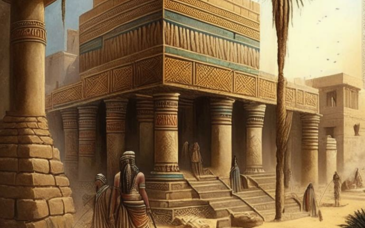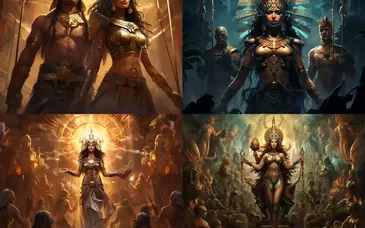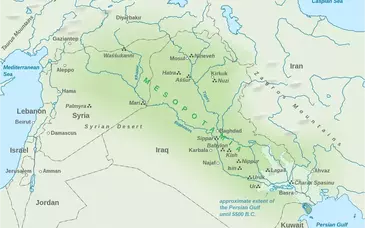
Iraq: Khorsabad, Nabu Temple Neo-Assyrian Period Reign of Sargon II, 721-705 B.C. Gypsum (?) 151.2 cm H, 45.3 cm W Excavated by the Oriental Institute, 1932-33 OIM A11808 and OIM A11809
These two statues once flanked a doorway leading into the temple of Nabu, the god of writing and of knowledge. Nearly identical sculptures were found at the entrances to other temples at Dur-Sharrukin. As well as representing minor deities, the figure also may have served as supports for as-yet-unidentified objects, as there are saucer-like hollows cut into the square blocks resting on their crowns.
Each of these gods holds a small vessel from which flow four streams of water - two rise over his shoulders to flow down his back and two stream down the front of his garment to his feet. Figures of this type are common in the art of the ancient Near East; they probably represent fertility deities who are embodiments of the life-giving and life-sustaining forces within fresh water.
The statues, when found, were in many pieces. These fragments were cleaned, soaked in a hardening solution, and then reassembled and restored by a member of the technical staff of the Oriental Institute.




